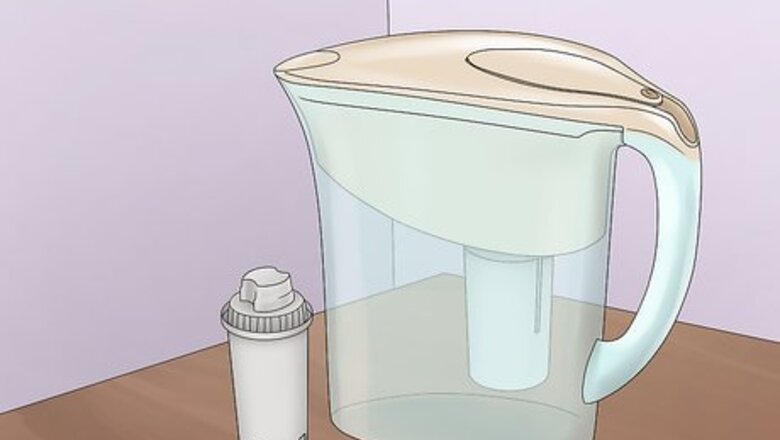
views
Choosing a Filtering System
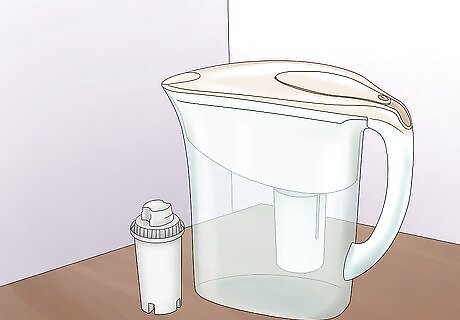
Choose a pitcher filter. A pitcher filter, or carafe filter, is a filter that you place over the top of a pitcher or large dispenser. The water is filtered into the pitcher or dispenser when you pour the water into the carafe. This system removes lead and chlorine but doesn’t remove fluoride, bacteria, or pesticides. This system is stored in the refrigerator. You have to replace the filter every couple of months. The pitchers are cheap, and the filters are usually under $10. You have to remember to replace the filters when needed, which can be inconvenient.
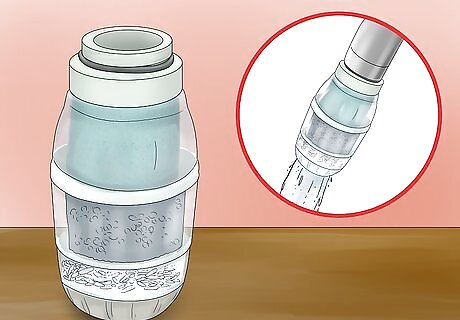
Try a faucet carbon filter. Carbon filters fit over the faucet and filter water through when you turn it on. Some filters connect to the water line under the sink. Water runs through a carbon bed filter. They are relatively cheap, so they won’t break your budget. They remove a variety of contaminants, including some pesticides, radon, chlorine, some bacteria, and heavy metals like lead. Additionally, carbon filters leave the minerals in the water that are good for you. Read the package carefully to determine what the filter doesn’t remove. It varies by model. Most carbon filters will not remove fluoride. These systems can be more expensive at first, but you only have to replace the filters once or twice each year.
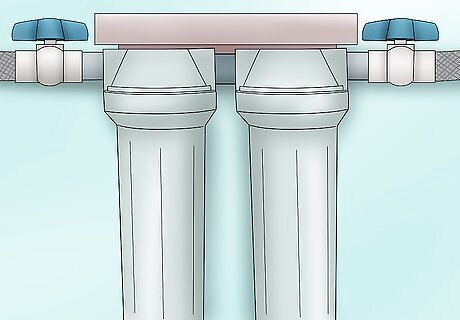
Install a whole house filter. Whole house carbon filters are installed directly into your home’s water supply line. This filters all the water that enters the house, including water in the bathroom. This system will remove chlorine and many industrial chemicals, but not bacteria and nitrates. These systems are relatively cheap and need their filters changed periodically. The schedule of filter changes depends on the model.

Try distillation. Distillation is a process where water is boiled and the vapor collected for drinking. This process removes bacteria, heavy metals like copper and mercury, and harmful elements like arsenic. However, it won’t remove chlorine or chlorine byproducts unless paired with a carbon filter. Distillation takes out all the beneficial minerals. You can buy a home distillation system that can remove almost all contaminants.
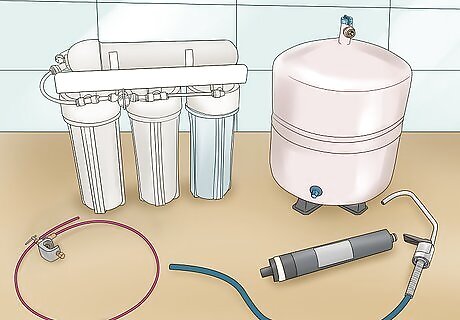
Purchase a reverse osmosis system. Reverse osmosis is a process where a large tank is attached to the water pipe under your sink. The water is pushed through filters that remove contaminants. Reverse osmosis wastes water during the purification process. Some models waste more water than others, from three to 20 times more water than it filters to use, so check the model before purchasing. This process eliminates bacteria, nitrates, asbestos, and heavy metals. This process leaves in chlorine but removes all beneficial minerals like fluoride. Check the label to see exactly what the model removes. These systems are expensive, ranging from $500 to $1000, though the overall filtering cost may be cheaper in the long run than other systems. You should replace the filter once each year.
Determining the Safety of Your Water
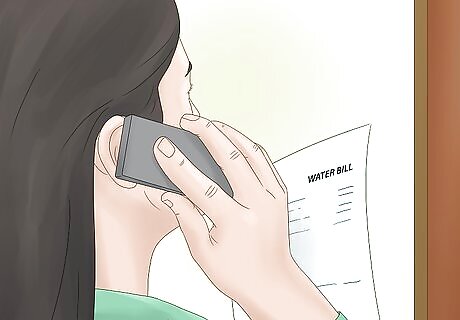
Contact your local water source. If you want to check on the status of your local water, contact the local water utility company or the local government authorities. Start by looking at your water bill for a number to contact the water company. You can also contact the city or town hall about reports on local water quality. You can also try calling the local health department.

Ask questions about your water quality. When you talk to someone from the local water authority, you need to know the right questions to ask. You can ask basic questions, like is there fluoride added to the water and when was the last time the EPA tested the water. You can also ask if they use any other disinfectants than chlorine. You can ask about the source of the water. Groundwater is generally cleaner due to the natural filtering from the soil. Surface water has a tendency to pick up more pollutants. If they tell you that the EPA has tested the water, ask for the results. You can also ask for a copy of the test results since by law they have to provide you with information about water contaminants.

Contact the EPA. If you cannot get any information from your local water authorities, you can try contacting the EPA. You can look up your local city’s “Consumer Confidence Report.” You may also contact the EPA safe drinking water hotline at 1-800-426-4791. You may also contact the EPA via their online form. You can also email the EPA at [email protected].
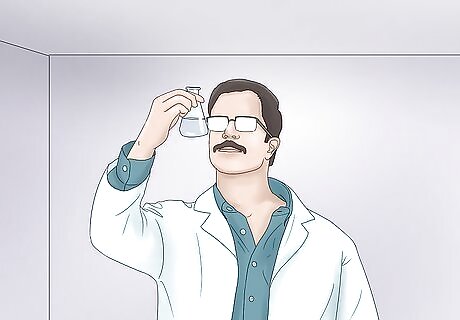
Test your water. If you have well water, or you are concerned about your community’s water, you can test it yourself. Only send your water to a state and EPA-certified laboratory. You can find approved labs by contacting the EPA hotline. The cost of testing the water ranges from $25 to $100, depending on the thoroughness of your test.
Cleaning Your Water Quickly
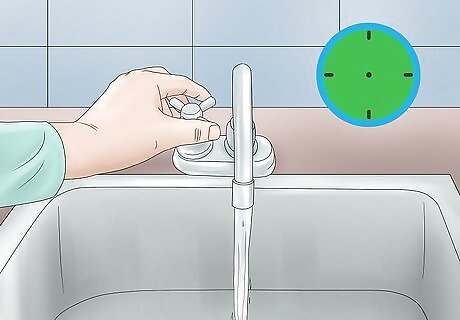
Run the water in the morning. One way you can make your water cleaner is to run the water for a full minute first thing in the morning. This can get rid of some of the lead in the water that sat in the pipes all night.
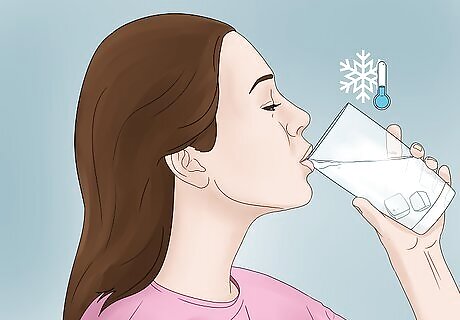
Drink cold water. Water that is cold from water pipes may be safer to drink than when it is hot. Heavy metals like lead are absorbed more easily into hot water than cold water.
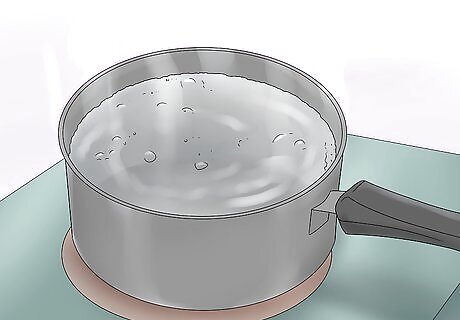
Boil the water. If your water has a lot of chlorine in it, boiling it can help get rid of some of the chlorine as a gas. If your water tastes a lot like chlorine, boiling it can help improve the taste. If you are in a boil water advisory area, bring your water to a full rolling boil for at least one minute. This can help kill bacteria and parasites in the water.
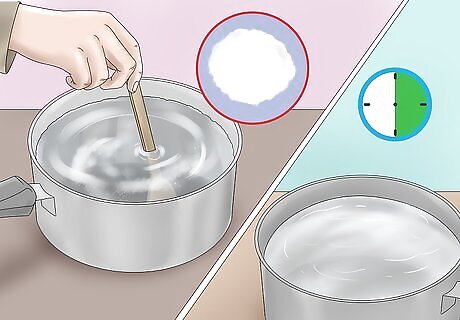
Purify your water with bleach. If you are in a boil water area and your water is cloudy or you have no power, you can use bleach to purify it. Add around 1/8 of a teaspoon of plain unscented bleach to a gallon of tap water. Mix the water and bleach thoroughly. Then leave the water for 30 minutes. Repeat if the water is cloudy. Make sure the container you place the water in has been disinfected with purified water.














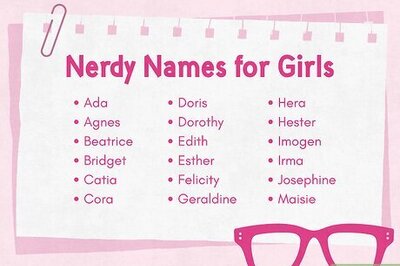
Comments
0 comment